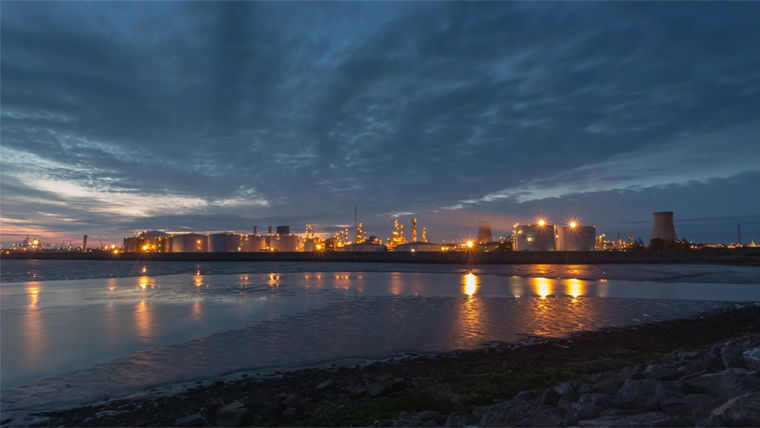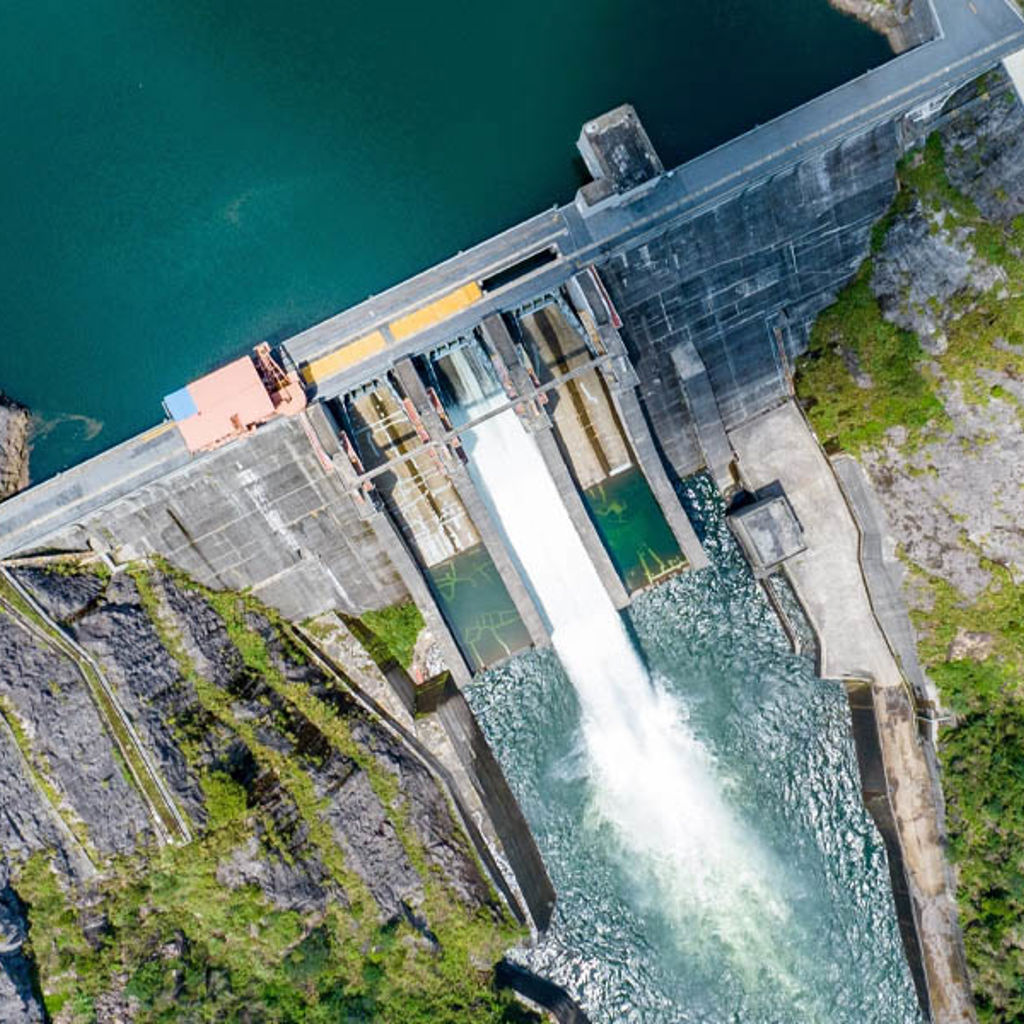Transforming the UK’s largest carbon emitting industrial cluster into a global catalyst for change
The Humber Industrial Cluster, based around the estuary of the River Humber on England’s east coast, is critical to unlocking the energy transition for other industrial clusters and other sectors.


UKIMEA Hydrogen Leader
Adrian Anderson
Senior Consultant
Decarbonising energy-intensive industrial clusters will accelerate the UK’s transition to a cleaner and more prosperous economy for all. The UK’s industrial sector accounts for 16% of our direct emissions (UK Industrial Decarbonisation Strategy 2021), but industry is one of the most challenging sectors to decarbonise. That’s why it’s imperative to act now.
The Humber Industrial Cluster, based around the estuary of the River Humber on England’s east coast, is critical to unlocking the energy transition for other industrial clusters and other sectors. It emits around 20 million tonnes of carbon dioxide annually, more than any of the UK’s other industrial clusters. One third of the country’s fuels are refined in the Humber and the region includes the UK’s largest ports complex.
While the net zero challenge here is immense, so is the opportunity to renew one of the UK’s industrial heartlands, making it an international beacon for low-carbon, clean growth that respects the environment and drives local economic recovery. By collaborating across the public and private sectors to meet the industrial decarbonisation challenge, the Humber can attract inward investment and create more secure, well-paid jobs for its communities. It’s exactly the sort of collective effort to build sustainable prosperity that we discuss in our report The Global Green Economy: capturing the opportunity
A collaborative green manifesto for a net zero economy
Solving a complex challenge on this scale requires collaboration within and across industry, government and the wider community. The Humber Industrial Cluster Plan (HICP) is the result of a two-year cooperative effort, jointly funded by UK Research and Innovation and eight industrial partners. In our role compiling and distilling the outputs, insights and deliverables from all contributors, we were able to bring our expertise in energy, planning and economics to support the HICP team. We met the people critical to industrial decarbonisation at engagement events and heard first-hand of their ambitions and their commitment to transform the Humber region. The experience and stories from the local community inspired and informed our cluster-wide impact assessment, which we carried out using the UN Sustainable Development Goals (SDGs) as a framework.
The HICP provides a robust plan for the cluster to reach net zero before 2040. It also shows that going beyond net zero is possible by facilitating engineered greenhouse gas removals. The HICP demonstrates that this can accelerate a national transition, creating an economy that’s more inclusive and more prosperous – in line with the SDGs.

The HICP culminates in seven mandates for action. These include technological interventions, but also efficiency measures, circular thinking, a focus on communities, skills and accelerating investment and collaboration.
- To implement carbon capture and storage and greenhouse gas technologies at pace and scale
- To implement low-carbon hydrogen at scale
- To adopt all optimal electrification measures
- To prioritise efficiency and circular economy measures
- To generate social value through the industrial transition
- To further develop Humber skills and supply chains
- To drive investment and collaboration to deliver the net zero Humber of tomorrow
The first four focus on the key technical industrial interventions; the final three on the process of delivery. Let’s take a closer look at three of these mandates.
To implement carbon capture and storage and greenhouse gas technologies at pace and scale
Carbon capture and storage (CCS) involves capturing CO2 at a point source, transporting it to a storage site and preventing its release into the atmosphere. The Humber Industrial Cluster is adjacent to the UK’s largest agglomeration of subsea carbon storages sites in the North Sea, where carbon dioxide can be permanently and safely stored. This proximity of carbon emissions and carbon storage makes it an ideal location for a CCS cluster.
The Plan encompasses two large-scale CCS projects which will connect the largest emitters to the offshore carbon store. This will enable deep cuts in emissions from fossil fuel generation and carbon-intensive industrial processes such as steel production, while low-carbon power is scaled up. It outlines four robust scenarios to cut the Humber's Scope 1 industrial emissions of around 20Mt CO2e/year to near zero. The carbon capture infrastructure also facilitates engineered greenhouse gas removal technologies, which could generate up to 16Mt CO2e/year of negative emissions. While the priority is to ‘turn off the carbon taps’, we also need to ‘widen the carbon plughole’, using all means necessary to sequester carbon, whilst focussing on overall sustainability.
To achieve deep cuts in emissions, it’s critical that the Humber accelerates momentum to reduce consumption, restore ecosystems, and remove carbon by building carbon capture and storage infrastructure. This is something we explored in our report Reduce, Restore, Remove – A call to action, which highlighted the hierarchy of interventions on the path to net zero.
Our complementary work on A Vision for Hydrogen on Teesside details how the north-east coast of England can become globally significant in the production, consumption and export of low-carbon hydrogen. It explores options for linking to carbon storage facilities under the North Sea and safeguarding and creating thousands of high-quality jobs.
One of the fundamental principles of the HICP is that communities have a stake in its success and it’s vital that they are properly engaged.
Adrian Anderson
Senior Consultant, Arup
To drive investment and collaboration to deliver the net zero Humber of tomorrow
Decarbonising the Humber industrial cluster would be a huge step towards achieving the ambitions of the UK Government’s Industrial Decarbonisation Strategy. There is no better time than now to invest in the UK’s industrial clusters. Recent government interventions elsewhere such as the United States’ Inflation Reduction Act and REPowerEU in Europe demonstrate the opportunity to stimulate growth in the Humber. The UK Government’s Skidmore Review, now called Mission Zero, published in January 2023, makes the case for further investment in decarbonisation as part of the UK’s climate strategy. To drive the investment that will deliver the net zero Humber of tomorrow business, government and communities must continue to work together to tackle climate change, delivering not only emissions reduction but sustainable and equitable growth. This must be done with a resilient determination that can withstand potential shocks on the journey to net zero in 2040; from geopolitical threats to economic or natural disasters.
To generate social value through the industrial transition
The voice of the community is incredibly important for plans like this – without listening to local people it’s all too easy to make incorrect assumptions about the local benefits. One of the fundamental principles of the HICP is that communities have a stake in its success and it’s vital that they are properly engaged. This matters: levelling-up is much needed in the Humber and the area has huge potential.
Realising this potential will, as we highlighted, require unblocking and prioritising local skills and supply chains. The HICP reveals that between now and 2040, up to 22,000 new direct jobs will be created in the Humber, and up to 70,000 nationally. For the Zero Carbon Humber pipeline project alone, 103km of offshore CO2 pipeline is required, with another 119km of parallel hydrogen gas and CO2 pipelines on shore. These projects are a huge opportunity to generate social value for Humber residents and for UK businesses with the skills to support the transition.
Together it is possible
Enacting the HICP will require a commitment to invest, innovate and collaborate. The Plan demonstrates that achieving net zero by 2040 is possible and maps out the route for this journey. It gives public and private sector investors confidence that now is the time to invest in the Humber, which can in turn unlock the UK’s other industrial clusters.
At Arup, we stand ready to support industries and government in helping to deliver the Humber of tomorrow, and to support other industrial clusters in the UK and around the world to plan for their journey, building on the Humber’s example.
But it’s imperative to act now – we must continue to collaborate, innovate, and explore new ways to decarbonise hard-to-abate sectors. We must overcome the uncertainty around the UK’s route to a sustainable, equitable, prosperous and resilient future; a future worth fighting for.
Get in touch with our team
Insights
Explore more energy transition insights
Offshore transmission: How do we move towards investing, planning and delivering offshore assets with confidence?

Developing an offshore wind turbine factory

Unlocking investment in the UK's offshore wind supply chain

Innovative solutions for pumped hydro energy storage

